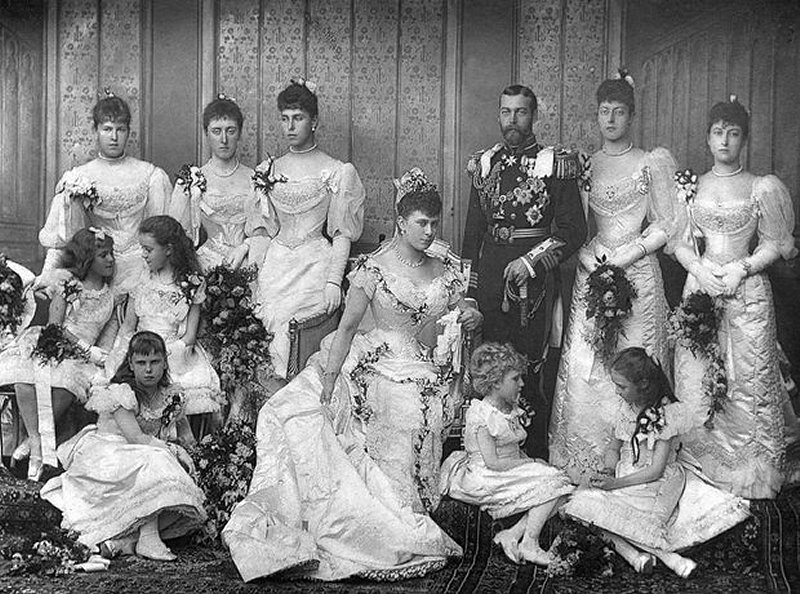
On this day in 1893, royal history was made when the Duke of York married Princess May of Teck in London. The couple, who would go on to reign as King George V and Queen Mary of the United Kingdom, were in many ways the founders of the modern royal family. Here’s a closer look at the jewels worn by Princess May on her wedding day, 128 years ago today.
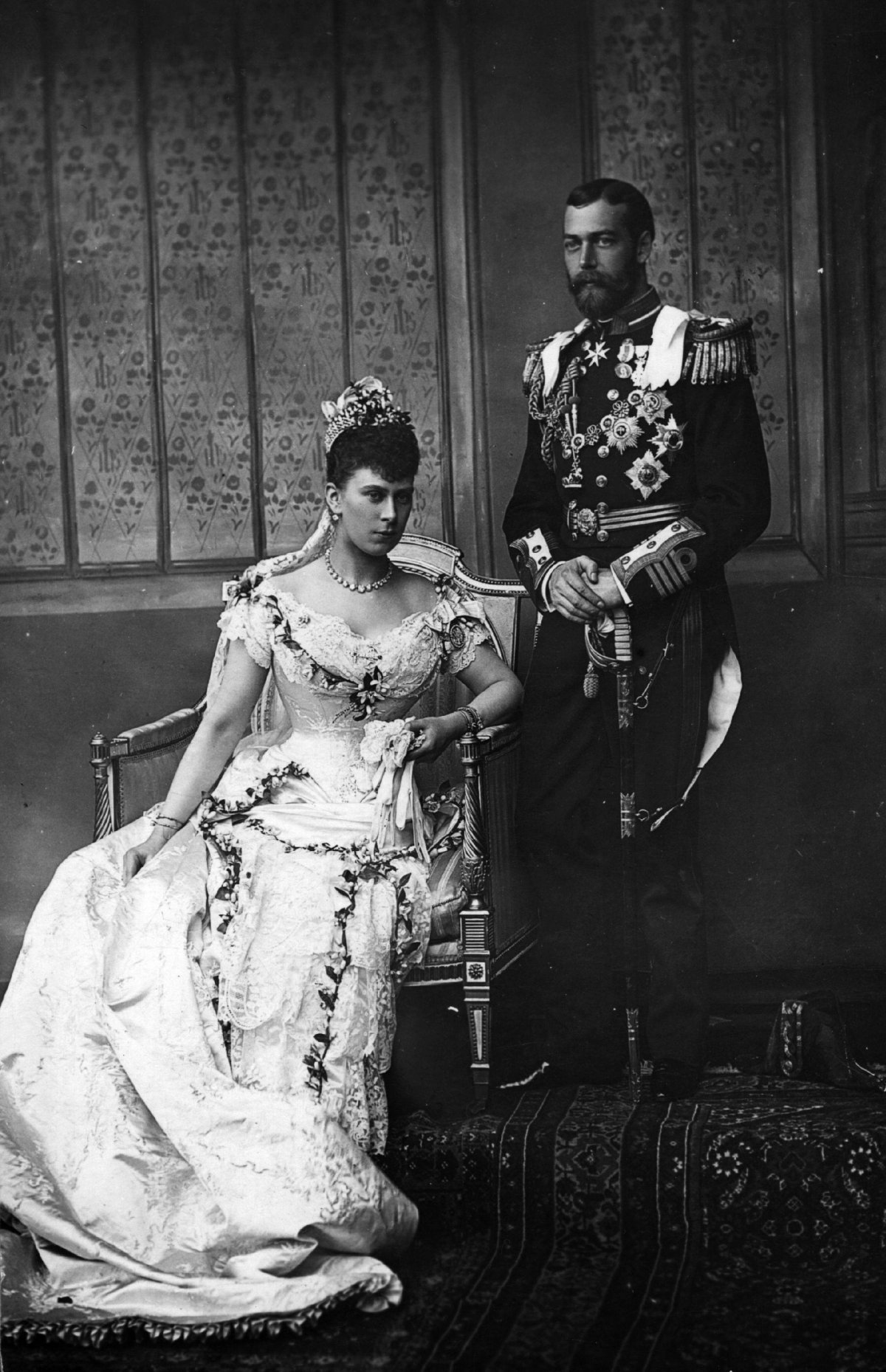
Prince George, Duke of York and Princess May of Teck had an unconventional courtship, to say the least. She was originally engaged to marry his elder brother, the Duke of Clarence—but he died from influenza before the wedding could take place. The family encouraged George to woo May, not wanting to let go of a suitable royal consort, and after some time, the couple did finally bond. (They were ultimately much better suited for each other, and far more in love than May had ever been with the late Duke.) They announced their engagement in May 1893, and the wedding was held two months later, on July 6, 1893.
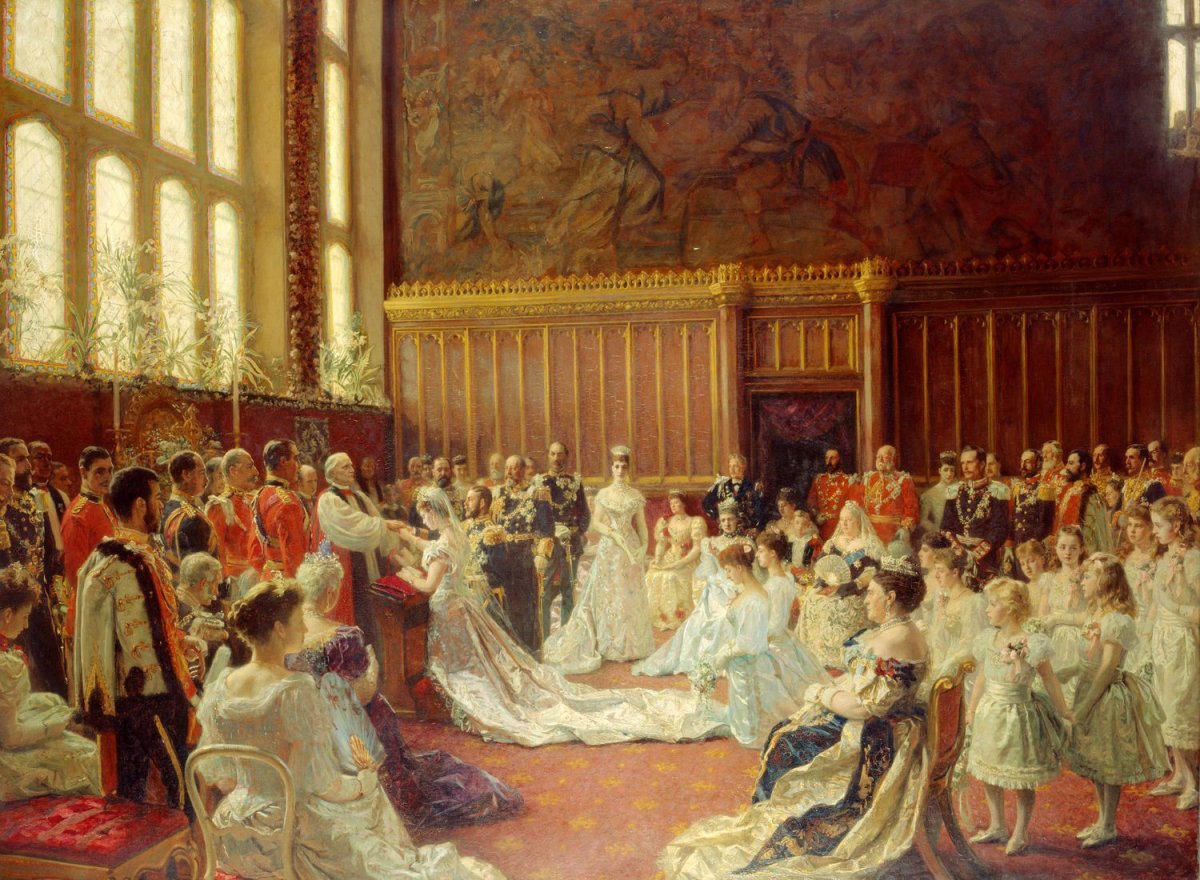
The wedding was held at the Chapel Royal at St. James’s Palace, in front of a small but impressive group of royal attendees. Queen Victoria, the groom’s grandmother, was in attendance, as were his parents (King Edward VII and Queen Alexandra) and his surviving siblings. Mary’s parents, the Duke and Duchess of Teck, were there as well; the Duchess and Queen Victoria were first cousins. You’ll also be able to spot many other royal luminaries, including the King and Queen of Denmark (the groom’s maternal grandparents) and the future Emperor Nicholas II of Russia (a cousin). Helpfully, the Royal Collection has uploaded a key to the painting, which was made by Danish artist Laurits Tuxen on a commission from Queen Alexandra. (No surprise, then, that she’s located in the very center of the picture.)
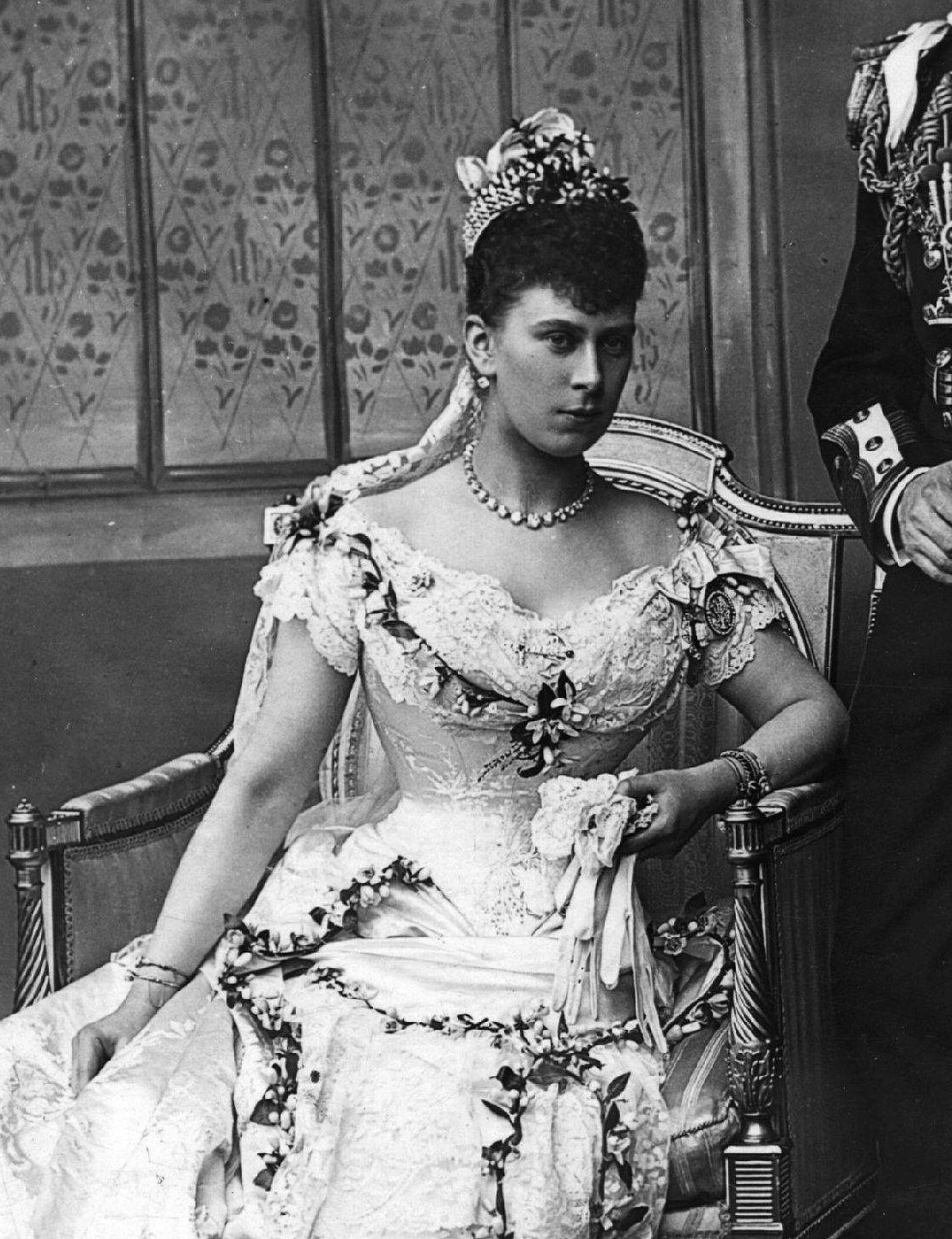
On her wedding day, Princess May wore an elaborate gown festooned with flowers and adorned with several pieces of jewelry. The press provided an incredibly-detailed description of the dress: it “was not only exceedingly beautiful, but was, at the same time, characterised by that simple elegance which distinguishes the toilets of all our young Princesses. The material used was a rich silver and white brocade, woven at Spitalfields, of exquisite texture and workmanship. The design, thrown up in silver from the soft background, is a singularly happy grouping of the shamrock, rose, and thistle, with silver ribbons entwined between each cluster of the national emblems. The plain Court bodice, short on the hips, and slightly pointed back and front, was quite untrimmed, except by a narrow berthe of finest Honiton point lace, headed by a trail of orange blossom gathered into a cluster at the bust, with a sprig of white heather introduced. The very short sleeves were composed of a frill of chiffon under one of lace. The front of the bridal gown was of beautiful white satin, arranged with three festooned flounces of Honiton point, matching that on the corsage, but much wider. The upper flounce is outlined by a trail of orange blossoms caught in the center with a feather, and falling in two ends to the foot of the skirt. The side seams marking the division between the silver brocade and the white satin petticoat were overlaid with trails of orange-blossoms terminating in a cluster, in which the white heather again appeared. The foot of the petticoat was finished by soft frills of chiffon, and the train was edged inside by a thick white satin ruche.”
May’s jewels on the day included diamond drop earrings (an interesting choice, since she almost never wore drops later in her life), a diamond collet necklace (a gift from her new parents-in-law), bracelets on both wrists, and several brooches. Pinned to the center of her bodice was an anchor brooch, her wedding gift from her groom, who had served in the Royal Navy before his brother’s untimely death. It’s tough to see in many photographs, but May also wore a tiara in her hair on her wedding day. Part of the diamond tiara was hidden behind orange blossoms, but the sides of the piece are easier to see in images like the one above.
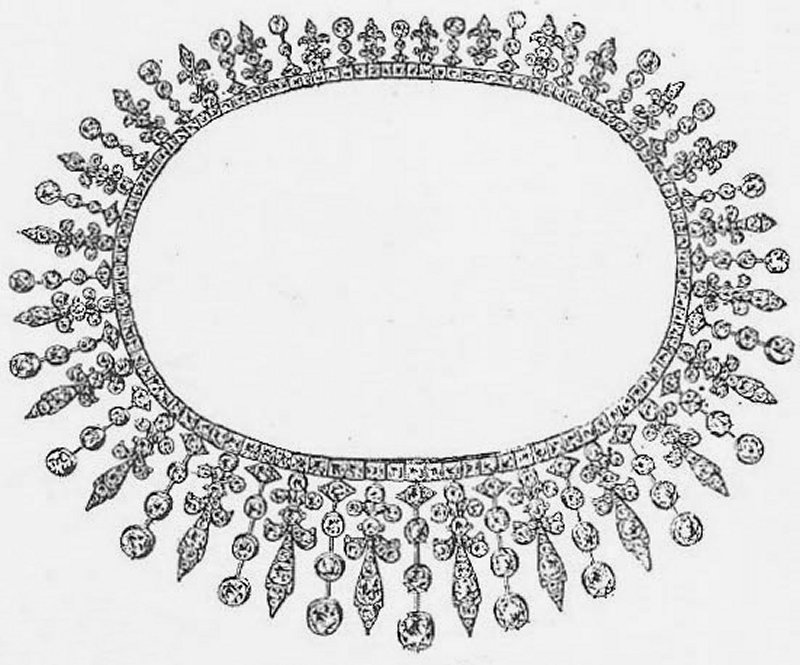
The diamond tiara, made by Collingwood, was Princess May’s wedding present from Queen Victoria. The jewel was convertible; indeed, in the illustrations published of May’s wedding gifts, the piece was set as a necklace (pictured above). May wore the jewel in both forms, but about twenty years after her wedding, she had it dismantled, using the diamonds to make a new diamond fringe tiara. That piece has gone on to become the most-worn wedding tiara by Windsor brides, including Queen Elizabeth II.
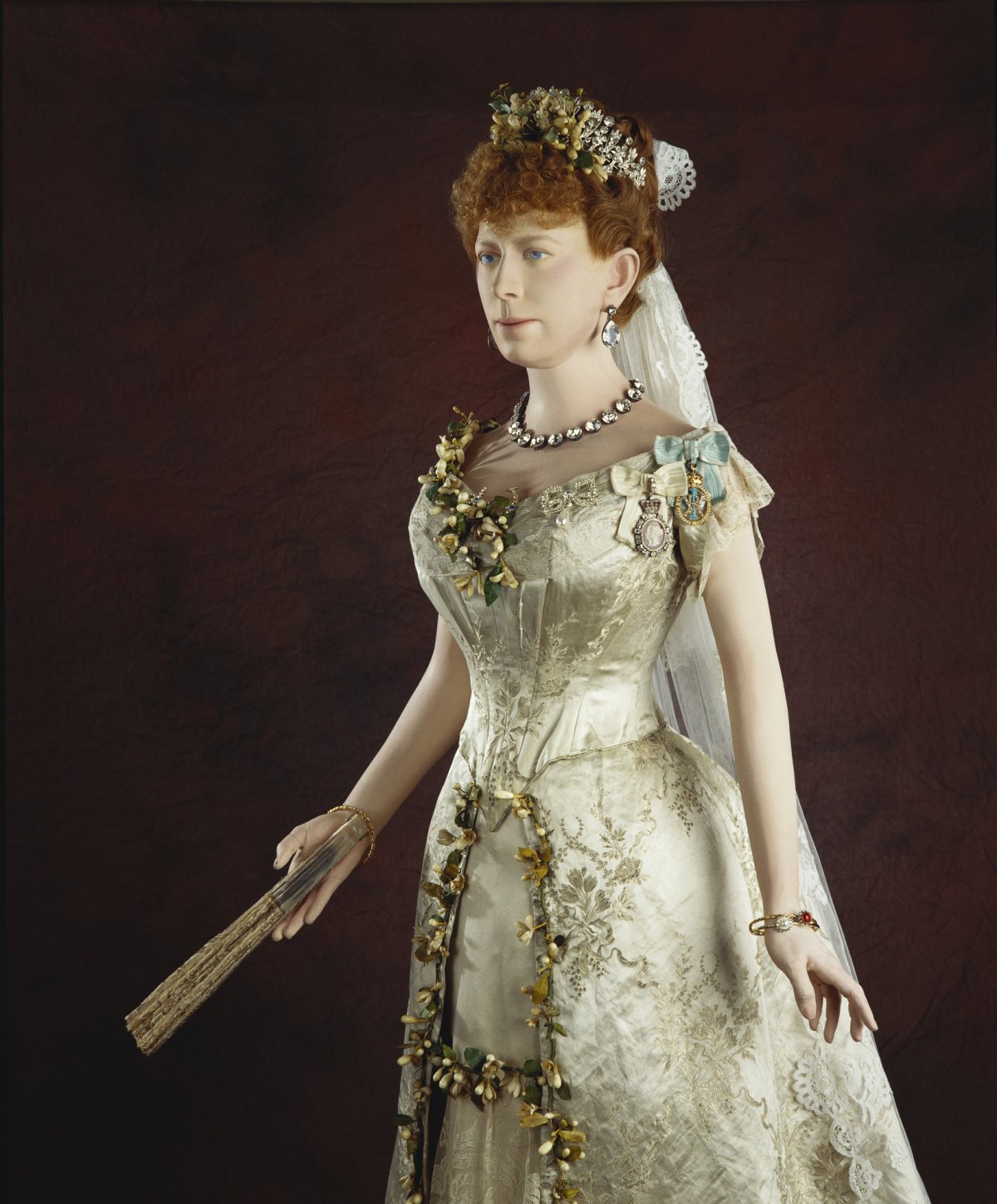
Queen Mary’s wedding gown is still a part of the British royal collection today, and occasionally it is displayed to the public. This image, showing the gown on a mannequin, is from one of those exhibitions. The jewels aren’t quite right here, but the image shows the colors and floral adornments of the gown well. It’s also a good way to spot the tiara, which shows up better in the color image. May finished off her wedding ensemble with the veil that had been worn by her mother, the Duchess of Teck, for her own wedding in 1866.
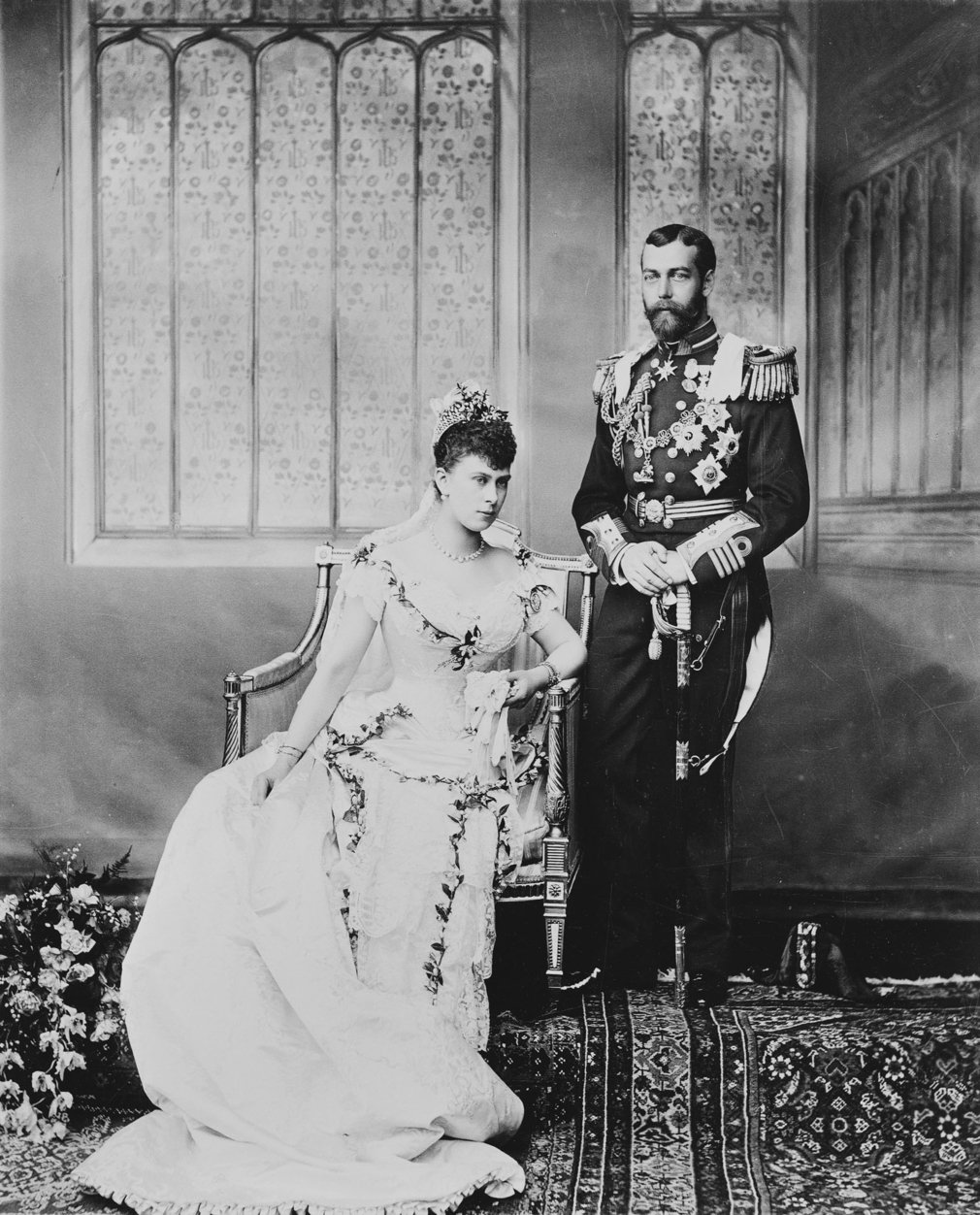
Here’s one more view of George, May, and their elaborate wedding ensembles. All in all, it’s a very restrained bridal look—at least jewelry-wise—from a woman who would become one of the greatest jewelry lovers in the British royal family.
Leave a Reply
You must be logged in to post a comment.